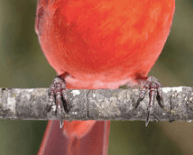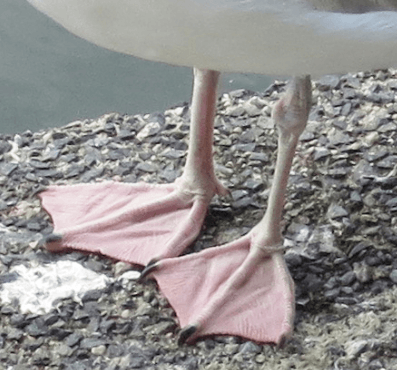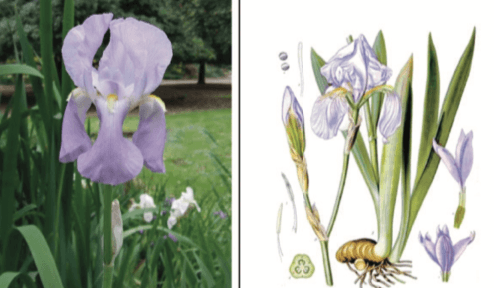True or False?
Plants are classified into two groups: vascular and cone-bearing.
False: vascular and nonvascular
The part of the vascular plant that anchors the plant into the ground is called the ___________.
Dandelion seeds blowing in the wind from one location to another is an example of one method of ___________ ___________ .
seed dispersal
What 4 things do all living things need?
___________ , 2. ___________ , 3. ___________ , and ___________.
food, water, air, and shelter
A characteristic that helps a living thing survive is called a(n) ___________.
Adaptation
Vascular or Nonvascular?
Most plants that you see every day are ___________ plants.
Vascular
Thin, branching roots that grow close to the surface. Grasses and most trees have this type of root.
Fibrous root
Taproot
Fibrous root
Plants that do not grow from seeds grow from structures called ___________.
Spores
Extremely cold, snowy environments usually have animals with ___________ fur living there .
Thick or white
What adaptation best helps a deer escape from being chased by a mountain lion?
a. Brown fur
b. Strong, fast legs
c. Small eyes
d. Large antlers
b. Strong, fast legs
Moss grows close to the ground and soaks up water and minerals like a sponge. Moss is classified as a ___________ plant.
Nonvascular
A tree trunk is a type of woody, solid ___________ that helps the plant carry water to its leaves.
Stem
Plant Life Cycle: Stage 1: ___seed_____
Stage 2 : _____?______
Stage 3: _more growth__
Stage 4: __maturity____
___________ is stage 2 of a plant’s life cycle, when the embryo in a seed causes it to grow and sprout.
germination
An aloe leaf has a coating that feels smooth and waxy. The waxy coating keeps the aloe plant from drying out. What kind of environment does the aloe plant most likely live in?
a. Stillwater pond
b. Pine forest
c. Desert
d. Frozen tundra
c. Desert
True or False?
A short and sharp beak would be best suited for a bird that drinks nectar from flowers.
False
*Tubes run through the plant’s roots, stems, and leaves.
*Roots take in water and minerals and also anchor the plant in the ground.
*Stems hold up the plant’s leaves, which make food for the plant.
What kind of plant is being described?
vascular
Pine trees are vascular plants that produce produce reproductive structures called ___________.
a. Flowers
b. Stomata
c. Leaves
d. Cones
Cones

This image shows the life cycle of a ____________ plant using spores to reproduce.
Nonflowering plant
Which bird’s feet most likely have the adaptation for grabbing onto large prey, such as a snake?
a.
b. 
c. 
d. 
d. 
A walking leaf bug uses mimicry by rocking back and forth to act like a leaf blowing in the wind. This is an example of a ___________ adaptation.
behavioral
*Plants have parts that look like roots, but the parts don’t take in water.
*Instead they help anchor the plant in the ground.
*Plants don’t have stems or leaves, either; instead they have a stalk with leaflike structures.
What species of plant could this describe?
a. Moss
b. Daisy
c. Oak tree
d. Cactus
a. Moss
Which feature of the Iris pictured is used for sexual reproduction?

a. Leaves
b. Flower
c. Root
d. Stem
b. Flower
This image shows the life cycle of a ___________ plant using seeds to reproduce.
Flowering plant
Which environmental change could cause plants and animals to develop physical adaptations over time that help them stay cool and conserve water?
a. Deforestation
b. Drought
c. Extreme cold
d. Flooding
b. Drought
In open spaces, grasses can bend in strong winds. Being able to bend in strong winds is an example of a ___________ adaptation.
Physical
Cattails can grow thick stems that are up to 3 meters tall and rise above the surface of lakewater. What type of environment do thick, tall stems help cattails survive in?
Water (stillwater lake/pond)
You are in charge of deciding which plants to use for the pond being built in your backyard. What plant has physical adaptations best suited for a pond environment?
a. Elodea can grow new roots when pieces of the plant break off.
b. Grasses have flexible, thin stems that bend with the wind.
c. Cattails have tall, sturdy stems that help them grow above the water’s surface.
d. Cacti have a waxy coating on their stems to minimize water loss.
c. Cattails have tall, sturdy stems that help them grow above the water’s surface.
A bee goes from flower to flower drinking nectar. At each flower, the pollen on the stamens rubs off on the bee. When the bee visits the next flower, the pollen drops off and falls on the pistil, pollinating the flower. This would be best to observe if you were trying to study _____________________ .
a. Seedling growth
b. Seed dispersal
c. Sexual reproduction in plants
d. The germination of a seed
c. Sexual reproduction in plants
Deforestation is when a lot of trees are cut down over time, causing the size of a forest to shrink. What kind of animal would be most affected by deforestation in its environment?
a. Snake
b. Bird
c. Bee
d. Frog
b. Bird
Sloths spend almost their entire lives living in trees. If sloths did not have the physical adaptation of long ___________ , they would not be able to hang onto trees so easily.
a. Teeth
b. Legs
c. Claws
c. claws